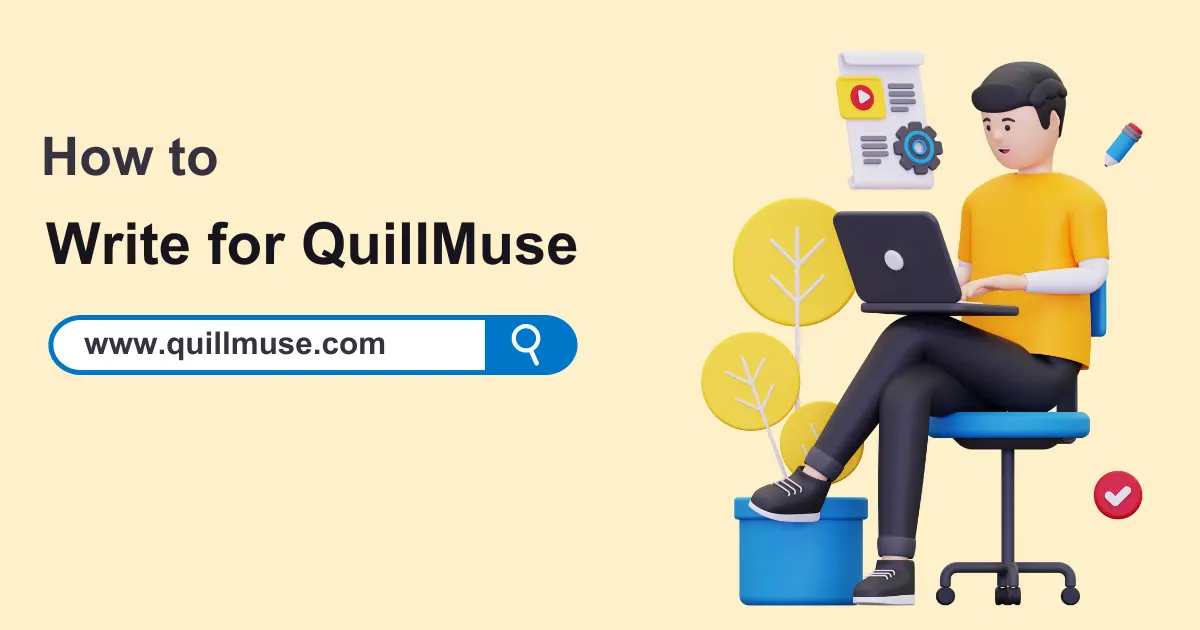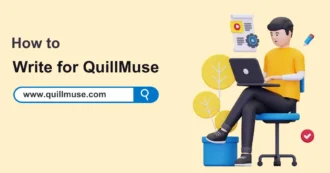Content Writing Guide for QuillMuse's Writers

Welcome to QuillMuse’s Content Writing Guide! Here, we provide comprehensive guidelines to help our writers craft compelling and engaging content. Whether you’re a seasoned author or just starting, these tips will elevate your writing:
Content Formatting & Writing Guide for QuillMuse
When you write content for QuillMuse, you must follow the following rules to ensure your content is written according to the guidelines of QuillMuse:
1. Start With Research: When you decide to write content, your first task will be researching. Without research, you cannot ensure quality content. So, before you start your writing, start with research.
2. Understand Your Audience: Identify your target readers and tailor your writing style to resonate with them.
3. Write Engaging Title: Craft a compelling title that grabs attention and includes your target keywords.
- Use the focus keyword near the beginning of SEO title.
- Titles with positive or negative sentiment work best for higher CTR.
- Add power words to your title to increase CTR.
- Add a number to your title to improve CTR.
4. Write Engaging and SEO-optimized Intro: If you fail to write an engaging and SEO-optimized intro, the results will decrease the bounce rate and rank of your content. You must use the focus keyword at the beginning of the content. Try to prove your skills here.
5. Meta Description: Here are some additional tips for writing an effective meta description:
- Use your target keyword.
- Keep it short at around 160 characters or less.
- Use strong verbs and action words.
- Use call-to-action to improve click-through rates.
6. Optimize URL Slug: Here are some best practices to follow when determining what your post slug should be:
- Use relevant keywords: Include key terms that accurately represent the content.
- Keep it concise: Aim for a short and descriptive slug, ideally under 5 words.
- Use hyphens to separate words: This improves readability and search engine understanding.
- Avoid special characters: Stick to letters, numbers, and hyphens to ensure compatibility.
- Be mindful of stop words: Exclude common words like “and,” “or,” and “but” to focus on essential keywords.
- Maintain a logical structure: Arrange words in a logical order for both users and search engines.
- Be lowercase: Keep the entire slug in lowercase for consistency and simplicity.
- Steer clear of unnecessary information: Eliminate redundant words or details that don’t add value.
For example, instead of “www.example.com/blog/post?id=123,” use “www.example.com/seo-optimized-url-slug.”
7. Use Focus Keywords Naturally: Using focus keywords in content is crucial for search engine optimization (SEO). They help search engines understand the relevance of your content to users’ queries, improving the chances of your pages appearing in search results. Use the focus keyword(s) in the content up to five times.
8. Featured Image: The featured image must be designed under the following rules-
- Size: 1200PX x 800PX.
- Image format: WebP
- Relevant with topic.
- Clean and attractive design.
9. Content Length: Content should be 1200-2500 words long.
10. Font Size and Family: Keep the default font and font size settings of Google Docs; never change them.
11. Use Headings: Headings provide structure, making it easier for readers to navigate and understand the organization of the information. Headings also help search engines comprehend the hierarchy of your content, improving SEO. Additionally, well-structured headings make content more scannable, aiding readers in quickly finding the information they need. Use Focus Keyword in subheading(s) like H2, H3, H4, etc.
Here’s what the structure of that post might look like:
- H1: Ballet Shoes Are Awesome
- H2: Why we think ballet shoes are awesome
- H3: They don’t just come in pink!
- H3: You can use them for more than just dancing
- H3: They might be less expensive than you think
- H2: Where should you buy your ballet shoes?
- H3: The ten best ballet equipment websites
- H3: Our favorite local dancing shops
- H2: FAQs on ballet shoes
- H3: Why are ballet shoes important in dance?
- H3: How do I choose the right ballet shoes for my level and style?
- H3: What care routine should I follow for my ballet shoes?
- H2: Why we think ballet shoes are awesome
See how we’ve created a logical structure, using H2 tags to plan sections and H3 tags to cover specific topics? We’ve done the same thing in the post you’re reading right now!
Credit: Yoast
12. Check Grammar: Make use there is no grammatical errors in your writing. Ensure correct spelling and punctuation.
13. Don’t Use Extra Space: Don’t keep extra space between paragraphs and headings.
14. Use Short Sentences and Paragraphs: Add short and concise paragraphs for better readability and UX.
15. Voice and Tone: The voice and tone of content depend on the audience and purpose. Maintain consistency, adapt to your audience’s expectations, and strike a balance between professionalism and relatability.
16. Add Internal and External Links: Add at least five internal links to your content that are related to this content. Also link out to up to two external resources that are relevant to the current content. Remember, the links will be in descriptive format.
17. Focus Keyword(s): Add the focus keyword to the post title, meta description, URL, at the beginning of the content, subheadings (H2, H3,…), as well as paragraphs.
18. Add FAQs: Write more than two frequently asked questions.
19. Add References: Adding references enhances credibility, avoids plagiarism, allows verification, provides context, and maintains academic integrity.
Improve Your Content Readability
Readability measures how easily your audience understands your content. To enhance it, follow these tips:
- Use short sentences and paragraphs: Write short sentences and paragraphs so that it’s easy for people to read and understand.
- Use simple and clear language: Use simple and straightforward language, making it accessible to readers of all levels.
- Spice it up with visuals: Add images, infographics, charts, or videos to make your content interesting and easy on the eyes.
- Use bullet points and numbered lists: Break down information with bullet points or numbered lists for a quick and clear read.
- Use Table: Tables improve content clarity, aiding organization, skimming, and readability. They enhance user experience and can benefit SEO when used wisely.
- Table of Content: Use Table of Content to break-down your text.
Image with Alt Tags
- A part of SEO is enhancing the reading experience.
- Include 4 or more images to break up text and add value for the reader.
- Optimize the alt tags for each image.
Remember, at QuillMuse, we celebrate diverse voices and perspectives. Let your creativity flourish within the framework of these guidelines, and together, we’ll create exceptional content for our readers.
